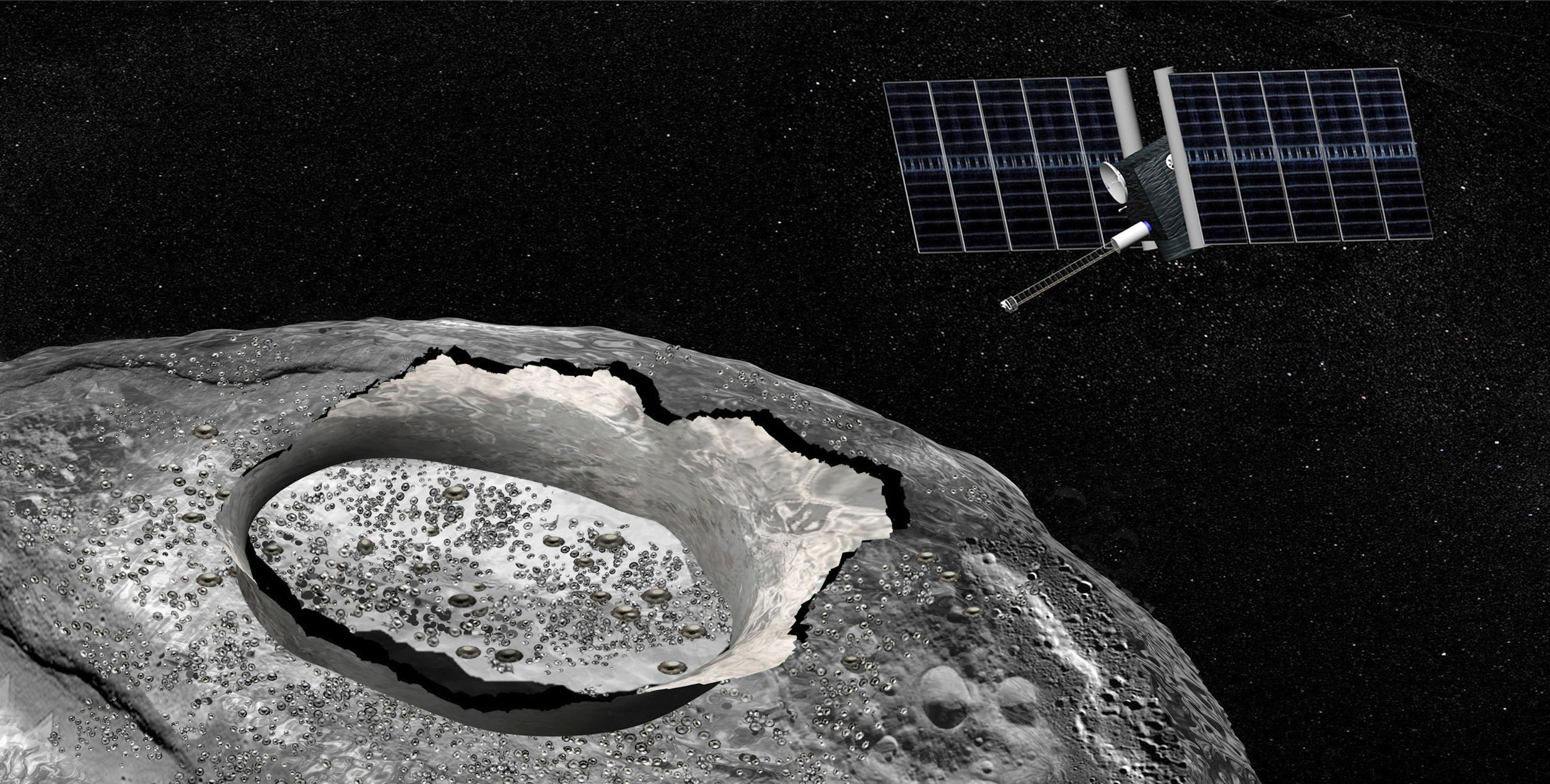
Previous observations of Psyche had shown no evidence for water on its surface. But in a paper accepted in The Astronomical Journal, Vishnu Reddy, an assistant professor at the University of Arizona’s Lunar and Planetary Laboratory, argues that new observations from the NASA Infrared Telescope Facility show evidence for volatiles such as water or hydroxyl, a free radical consisting of one hydrogen atom bound to one oxygen atom, on Psyche’s surface. In Earth’s atmosphere, hydroxyl is extremely reactive and helps remove many chemical compounds. Hence it is also known as the “detergent of the atmosphere.”
“We did not expect a metallic asteroid like Psyche to be covered by water and/or hydroxyl,” Reddy said, who has just presented these results at the joint 48th meeting of the American Astronomical Society’s Division for Planetary Sciences (DPS) and 11th European Planetary Science Congress (EPSC) in Pasadena, California. Reddy is second author on the paper led by Driss Takir at the U.S. Geological Survey in Flagstaff, Arizona. “Metal-rich asteroids like Psyche are thought to have formed under dry conditions without the presence of water or hydroxyl, so we were puzzled by our observations at first.”
The findings are interesting in the context of a proposed $500 million mission to send a spacecraft to Psyche, currently under review by NASA. Images taken by a spacecraft orbiting Psyche may enable us to distinguish between water and hydroxyl on the surface.
Asteroids are remaining fragments from the formation of the solar system that today orbit the Sun between the orbits of Mars and Jupiter. Most of them fall into two broad categories: those rich in silicates, and those rich in carbon and volatiles. Metallic asteroids such as Psyche are extremely rare, making it a laboratory to study how planets formed.
While the source of this water on Psyche remains a mystery, Reddy and his colleagues propose two possible mechanisms for its formation. “We think the water we see on Psyche might have been delivered to its surface by carbonaceous asteroids that impacted Psyche in the distant past,” says Reddy.
“Our discovery of carbon and water on an asteroid that isn’t supposed to have those compounds supports the notion that these building blocks of life could have been delivered to our Earth early in the history of our solar system,” said Reddy, who discovered similar dark, carbonaceous impactors rich in volatiles on the surface of asteroid Vesta by studying images from NASA’s Dawn mission. Alternatively, the hydroxyl could be the product of solar wind interacting with silicate minerals on Psyche’s surface.
To further explore the hypothesis of carbon and water delivered to protoplanetary bodies by asteroids in the early solar system, the UA is leading NASA’s OSIRIS-REx mission to bring back a sample from carbonaceous asteroid 101955 Bennu in 2023.



